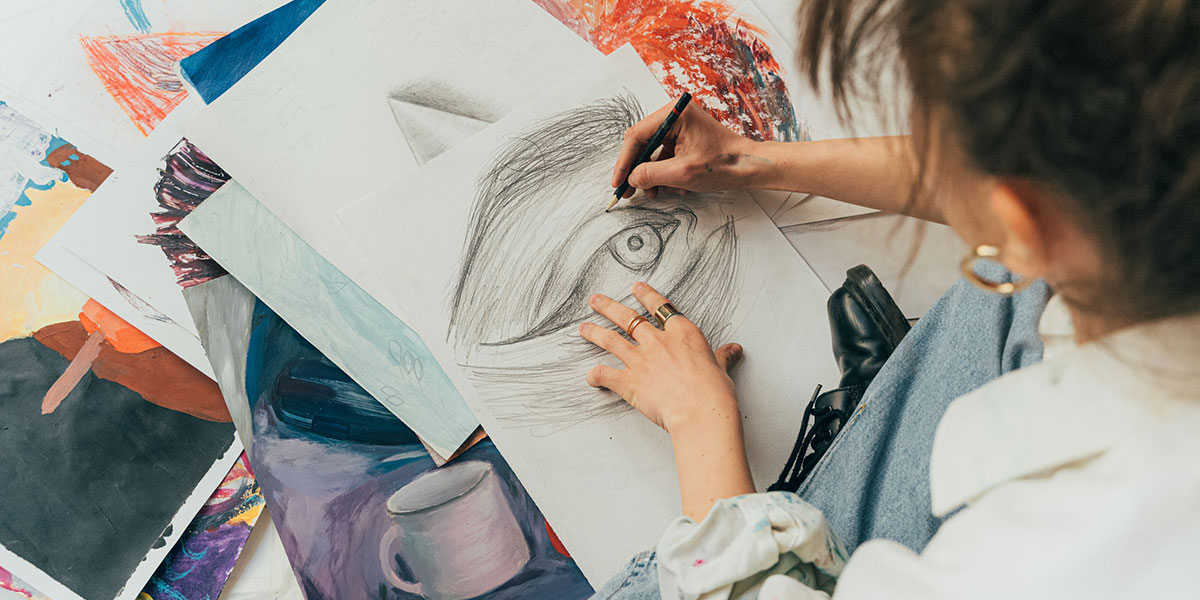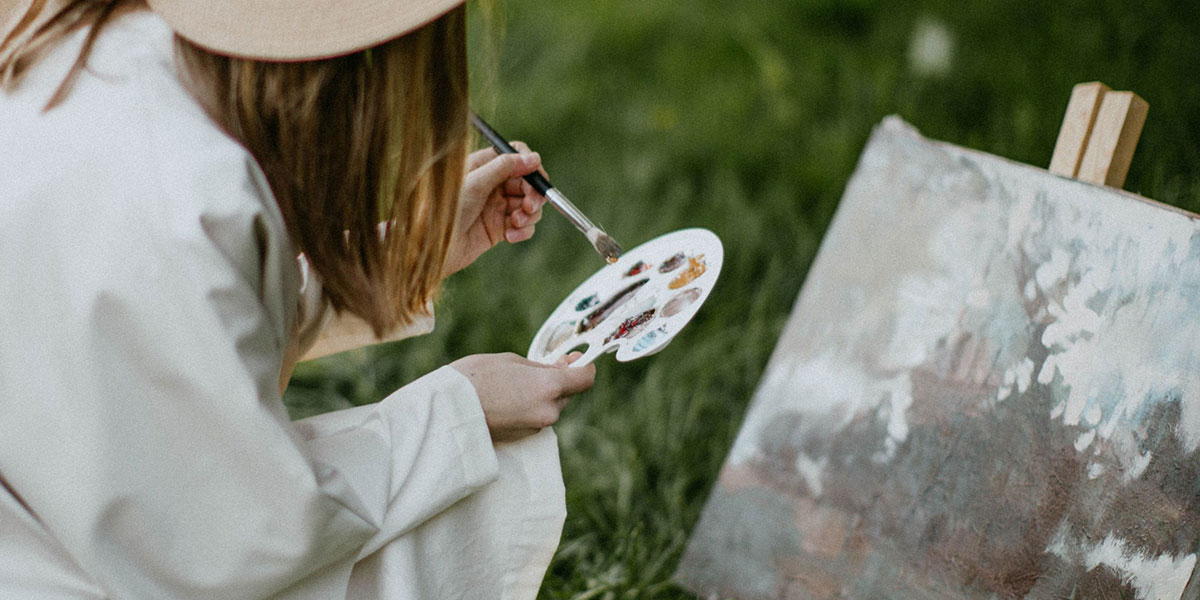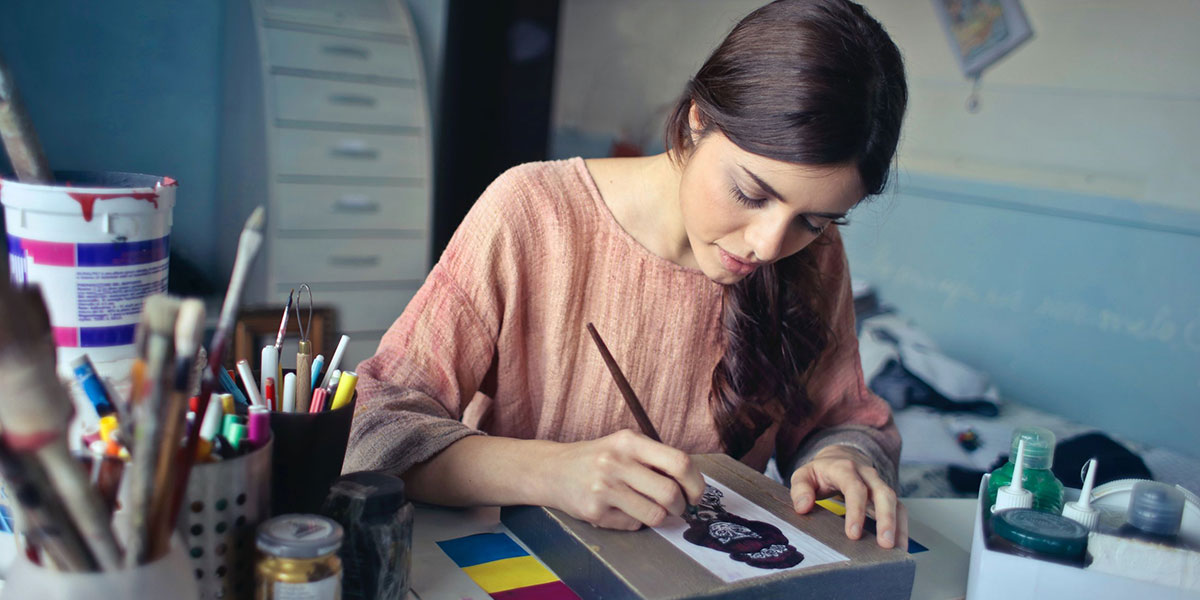Introduction
Art, in its various forms, has always held a profound capacity to communicate and heal. Expressive Arts for Healing, often referred to as Art Therapy, harnesses the transformative power of artistic expression to promote emotional, psychological, and physical well-being. In this article, we delve into the world of Expressive Arts Therapy, exploring its origins, principles, and the intricate interplay between art and psychology.
Understanding Expressive Arts Therapy
What Is Expressive Arts for Healing?
Expressive Arts for Healing, or Art Therapy, is a therapeutic approach that utilizes a range of creative outlets such as visual arts, music, dance, drama, and writing to facilitate the healing process. It offers individuals a unique avenue to express their thoughts, feelings, and experiences, even those that may be challenging to articulate through words alone. This holistic approach taps into the innate human capacity for creativity and self-expression, allowing participants to explore and communicate their inner worlds.
The Historical Roots of Art Therapy
The roots of Art Therapy can be traced back to ancient civilizations, where art was used as a means of healing and self-discovery. However, it wasn’t until the 20th century that Art Therapy as a formal practice began to emerge. Pioneers like Margaret Naumburg and Edith Kramer laid the foundation for modern Art Therapy by recognizing the therapeutic potential of art-making in the context of psychological treatment.
The Interplay of Art and Psychology
Art Therapy operates at the intersection of art and psychology, blending the principles of both disciplines to foster healing and growth. It recognizes that the creative process itself can be therapeutic, enabling individuals to explore and confront their emotions and subconscious thoughts. Art Therapists, trained professionals with expertise in psychology and the arts, guide participants through this process, helping them interpret their artwork and facilitating discussions about their feelings and experiences.
Expressive Arts for Healing acknowledges the power of metaphor, symbolism, and imagery in the art-making process. It allows individuals to externalize their inner struggles and conflicts, making them more accessible for exploration and resolution. By engaging with the arts, individuals can embark on a journey of self-discovery, emotional regulation, and personal transformation.
The Benefits of Art Therapy
Art Therapy offers a wide array of benefits that contribute to emotional well-being and personal growth. Here, we explore some of the key advantages it provides:
- Exploring Emotional Expression
One of the central benefits of Art Therapy is its capacity to facilitate emotional expression. Often, individuals find it challenging to put their feelings into words. Through art-making, they can externalize their emotions, allowing them to confront and process complex feelings such as anger, sadness, or joy. This non-verbal form of expression can be particularly valuable for those who struggle to communicate their emotions verbally.
- Stress Reduction and Relaxation
Engaging in creative activities, whether it’s painting, drawing, or sculpting, can be highly relaxing and meditative. Art Therapy provides a calming and stress-reducing outlet for individuals to escape the demands of everyday life and immerse themselves in the creative process. The act of creating art can promote a sense of mindfulness, helping individuals stay present and focused on the task at hand.
- Self-Discovery and Self-Reflection
Art Therapy encourages self-discovery and self-reflection. As individuals work on their art projects, they regularly gain insights into their thoughts, behaviors, and inner world. The symbolism and imagery within their artwork can reveal hidden aspects of their psyche, fostering a deeper understanding of themselves and their experiences.
- Coping with Trauma
For individuals who have experienced trauma, Art Therapy can be an invaluable tool for coping and healing. Traumatic experiences can be difficult to put into words, but they can find expression through art. Art Therapists help individuals navigate their trauma in a safe and supportive environment, allowing them to process and integrate their traumatic memories.
- Enhancing Communication
Art Therapy can improve communication skills, particularly for those who struggle with verbal expression. Creating visual or symbolic representations of their thoughts and feelings enables individuals to practice conveying complex ideas and emotions. This newfound ability to communicate can extend beyond the therapy room and benefit their relationships and daily life.
- Encouraging Creativity and Imagination
Engaging in artistic activities fosters creativity and imagination. Art Therapy nurtures individuals’ creative potential, encouraging them to explore new ideas, experiment with different materials, and explore unconventional solutions. This creativity can extend to problem-solving and personal growth in various areas of life.
The Role of the Art Therapist
The effectiveness of Art Therapy is closely tied to the guidance and expertise of the Art Therapist. Here’s an exploration of the pivotal role they play in the therapeutic process:
The Importance of Professional Guidance

Art Therapists are trained professionals with a deep understanding of both psychology and the arts. They possess the skills necessary to guide individuals through the creative process, ensuring that it remains therapeutic and conducive to healing. Their expertise allows them to tailor art activities to each individual’s unique needs and goals.
Creating a Safe and Supportive Environment
Art Therapists create a safe and non-judgmental environment where individuals can freely express themselves without fear of criticism or evaluation. This safe space is essential for individuals to explore their emotions and experiences openly. It fosters trust and enables the therapeutic process to unfold naturally.
Interpreting Artwork and Facilitating Discussion
Art Therapists play a vital role in interpreting the artwork created during sessions. They help individuals explore the symbolism, colors, and themes present in their art, facilitating discussions that delve deeper into the emotions and experiences depicted. Through these discussions, individuals gain insights into their own psychological processes and can work towards personal growth and healing.
The Role of the Art Therapist
Art Therapists play a pivotal role in the effectiveness of Art Therapy, guiding individuals on their journey towards healing and self-discovery. Here, we delve deeper into the multifaceted role of the Art Therapist:
The Importance of Professional Guidance
Art Therapists are trained professionals who bring a unique blend of expertise in psychology and the arts to the therapeutic process. Their education and experience equip them with the skills necessary to facilitate effective Art Therapy sessions. They assess individuals’ needs, design tailored interventions, and provide the support required for emotional healing and personal growth.
Professional Art Therapists are also well-versed in ethical standards and best practices, ensuring that therapy sessions are conducted in a responsible and respectful manner. Their guidance helps individuals navigate their creative expressions in a way that maximizes therapeutic benefits.
Creating a Safe and Supportive Environment
Art Therapists are adept at creating a safe and supportive therapeutic environment. This environment is characterized by empathy, acceptance, and non-judgment, allowing individuals to freely express their thoughts, emotions, and experiences through art. The absence of judgment fosters trust and encourages open communication, making it easier for participants to explore sensitive and deeply personal topics.
Interpreting Artwork and Facilitating Discussion
One of the key roles of the Art Therapist is to interpret the artwork created during sessions and facilitate meaningful discussions. Artwork often contains symbolism, colors, and themes that provide insights into an individual’s inner world. Art Therapists guide individuals in exploring these elements, helping them uncover the emotions and experiences embedded in their art.
Through discussion and reflection, Art Therapists assist individuals in making connections between their artwork and their psychological and emotional processes. This self-discovery can be enlightening and therapeutic, empowering individuals to address challenges, build resilience, and develop coping strategies.
Applications of Art Therapy
Art Therapy has a diverse range of applications, making it a valuable tool in various settings. Here, we explore some key applications of Art Therapy:
Art Therapy for Mental Health
Art Therapy is widely used to support individuals facing mental health challenges. It provides an outlet for expressing and processing emotions, reducing symptoms of anxiety and depression, and promoting overall emotional well-being.
Addressing Anxiety and Depression
Art Therapy can be particularly effective in addressing anxiety and depression. Engaging in creative activities allows individuals to release tension, explore the roots of their distress, and discover healthy coping mechanisms.
Healing from Trauma and PTSD
Art Therapy is instrumental in helping individuals heal from trauma and post-traumatic stress disorder (PTSD). It offers a safe space to explore and process traumatic memories and emotions, facilitating the path to recovery.
Supporting Addiction Recovery
Art Therapy is often integrated into addiction treatment programs. It helps individuals in recovery by addressing underlying emotional issues, improving self-esteem, and fostering self-expression as an alternative to substance use.
Art Therapy in Educational Settings
In educational settings, Art Therapy is used to support students’ emotional and social development. It can help children and adolescents express themselves, cope with academic stress, and develop essential life skills.
Art Therapy in Healthcare
Art Therapy is applied in healthcare settings to enhance the well-being of patients. It can be used to alleviate pain, reduce anxiety, and improve the overall quality of life for individuals dealing with medical conditions.
Art Therapy for Self-Exploration and Personal Growth
Beyond clinical applications, Art Therapy is embraced by individuals seeking self-exploration and personal growth. It provides a means of self-discovery, self-expression, and self-improvement, allowing individuals to tap into their creative potential and gain deeper insights into their lives.
The Creative Process in Art Therapy
Art Therapy revolves around the creative process, harnessing the power of artistic expression to promote healing and self-discovery. Here, we delve into the various facets of the creative process in Art Therapy:
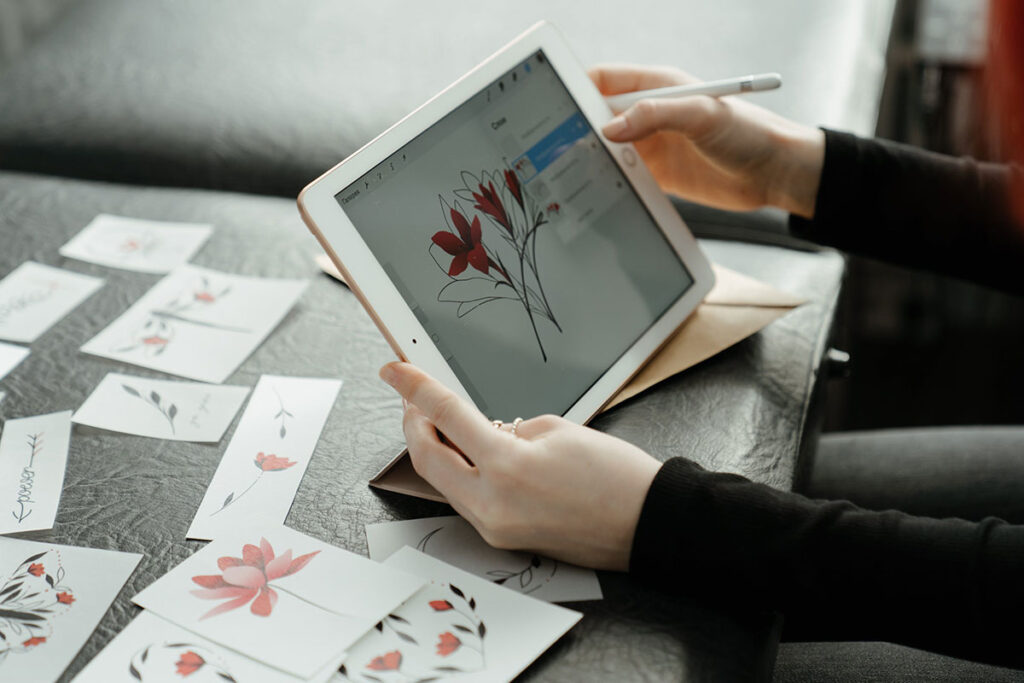
Engaging in Art-Making
The heart of Art Therapy lies in the act of art-making itself. Participants are encouraged to engage in various artistic activities, such as drawing, painting, sculpting, or collage. These activities provide a medium through which individuals can externalize their inner thoughts and emotions.
Art-making in therapy is often a spontaneous and intuitive process. Participants are encouraged to trust their instincts and allow their creativity to flow without the constraints of perfection or self-criticism. This freedom to create without judgment fosters a sense of liberation and empowerment.
Materials and Techniques
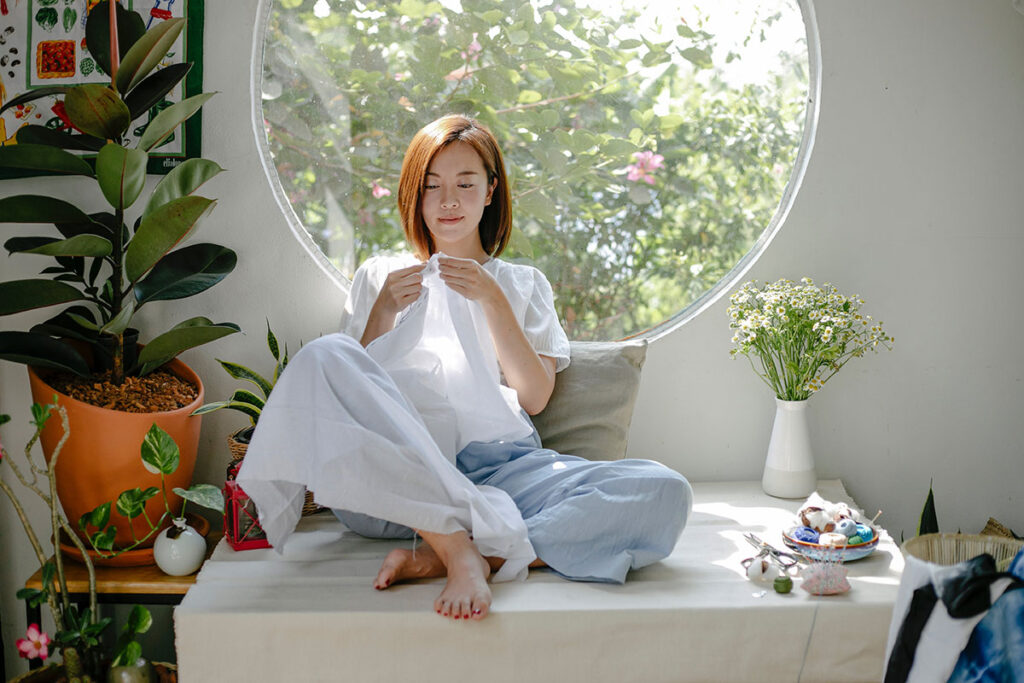
Art Therapists carefully select materials and techniques tailored to each individual’s needs and preferences. The choice of materials, such as watercolors, clay, or pastels, can influence the creative process and the emotions expressed. Techniques like brushwork, sculpting, or mixed media allow for diverse means of self-expression.
The tactile and sensory experience of working with different materials can evoke unique sensations and emotions, further enriching the therapeutic experience. Art Therapists guide individuals in selecting the most appropriate materials and techniques to support their therapeutic goals.
Non-Verbal Expression
A distinctive feature of Art Therapy is its capacity for non-verbal expression. Art serves as a universal language that transcends the limitations of spoken words. It allows individuals to communicate their thoughts and feelings in ways that may be difficult to express verbally.
Non-verbal expression through art provides a safe space for individuals to explore emotions they may not fully understand or feel ready to discuss openly. It invites the subconscious to communicate through symbols, colors, and imagery, allowing for a deeper exploration of inner experiences.
Encouraging Spontaneity
Art Therapy encourages spontaneity and intuitive expression. Participants are encouraged to embrace the creative process without overthinking or planning the outcome. This spontaneity allows for genuine and unfiltered self-expression, which can reveal deeper emotions and insights.
By encouraging spontaneity, Art Therapists help individuals bypass their inner critic and access their authentic selves. This process can be liberating, as it enables individuals to express aspects of themselves they may have suppressed or overlooked.
The creative process in Art Therapy is not about creating aesthetically pleasing artwork; rather, it is a journey of self-discovery and emotional release. It invites individuals to engage with their inner world, tap into their creativity, and find healing and growth through the act of creation.
Challenges and Considerations
Art Therapy, like any therapeutic practice, comes with its set of challenges and considerations. Here, we address some important factors to keep in mind: Ethical considerations are paramount in Art Therapy. Art Therapists must adhere to strict ethical guidelines to ensure the well-being and confidentiality of their clients. Respecting the privacy and autonomy of participants, obtaining informed consent, and maintaining the confidentiality of artwork and discussions are key ethical responsibilities in the field.
Access to Art Therapy Services
Access to Art Therapy services can be limited in some regions or communities. Challenges such as financial constraints, lack of available Art Therapists, or limited awareness of the therapy’s benefits can hinder individuals from accessing this valuable form of treatment. Addressing these accessibility issues is crucial for making Art Therapy more widely available.
Cultural Sensitivity and Inclusivity
Art Therapy is practiced across diverse cultural contexts. It’s essential for Art Therapists to be culturally sensitive and inclusive in their approach. Different cultures may have unique views on art, expression, and therapy, and therapists must respect and adapt to these cultural nuances to provide effective and respectful care.
The Future of Art Therapy
The field of Art Therapy is continually evolving, driven by research, innovation, and changing societal needs. Here, we explore some aspects of its future:
Evolving Trends and Research
Art Therapy is a dynamic field, and ongoing research is expanding our understanding of its effectiveness and applications. Future trends may include the development of new therapeutic techniques, the integration of emerging research findings, and the incorporation of innovative art materials and technologies.
Integrating Technology and Art Therapy
Technology is increasingly being integrated into Art Therapy practice. Digital art tools, virtual reality, and online therapy platforms are expanding the possibilities for remote therapy sessions and creative exploration. The integration of technology can enhance accessibility and offer new avenues for artistic expression.

Advocating for Mental Health through Art
Art Therapy has the potential to play a pivotal role in advocating for mental health awareness and destigmatization. Artistic expressions can serve as powerful messages, challenging societal misconceptions about mental health and promoting empathy and understanding.
How to Get Started with Art Therapy
If you’re interested in exploring Art Therapy, here are some practical steps to consider:
Finding an Art Therapist: Begin your journey by finding a qualified Art Therapist. You can search for licensed professionals in your area through directories, referrals from healthcare providers, or online resources. Ensure that the therapist has the appropriate credentials and experience in your specific area of interest.
Preparing for Your First Art Therapy Session: Before your first session, take some time to reflect on your goals and expectations for therapy. Be open to the idea that the creative process may lead you in unexpected directions. Approach your first session with an open mind and a willingness to explore your emotions and experiences through art.
Creating Art at Home for Personal Healing: Art-making can be a therapeutic practice you can engage in outside of therapy sessions. Consider setting up a space at home with art supplies and materials that resonate with you. Create art regularly as a form of self-expression and self-care, allowing it to be a source of personal healing and growth.
Conclusion
In conclusion, Art Therapy is a powerful and versatile approach that harnesses the creative process to promote emotional healing, self-discovery, and personal growth. Through this article, we’ve explored the various facets of Art Therapy, from its historical roots and benefits to the role of Art Therapists and its diverse applications.
Art Therapy continues to evolve, adapting to the changing needs of individuals and society. It offers a unique avenue for individuals to explore their inner worlds, express their emotions, and find healing through creative expression. Whether you’re facing mental health challenges, seeking personal growth, or simply curious about the transformative power of art, Art Therapy is a valuable tool worth exploring.
We encourage you to consider the possibilities of Art Therapy and to explore how it can contribute to your exploration, healing, and well-being through expressive arts.
